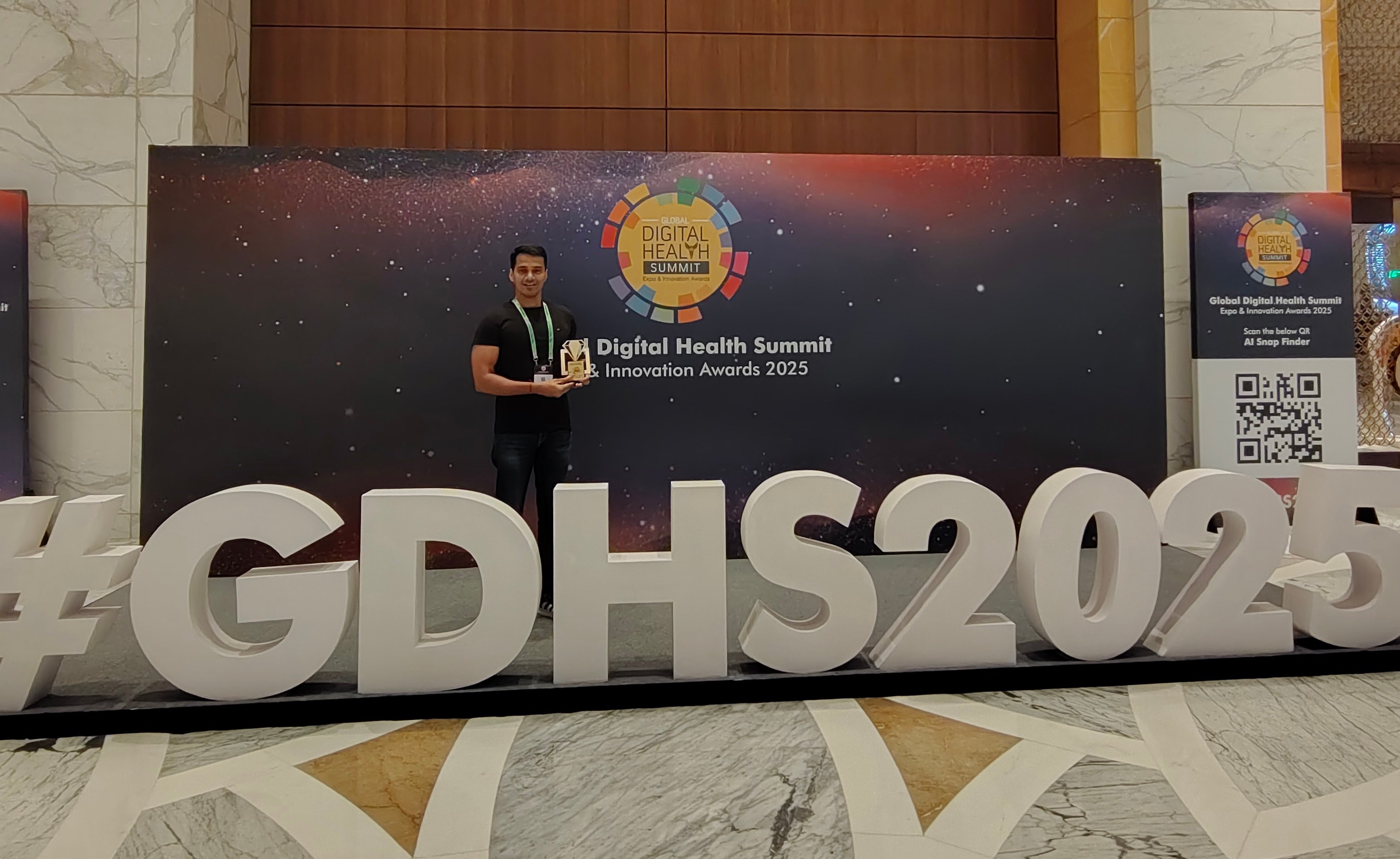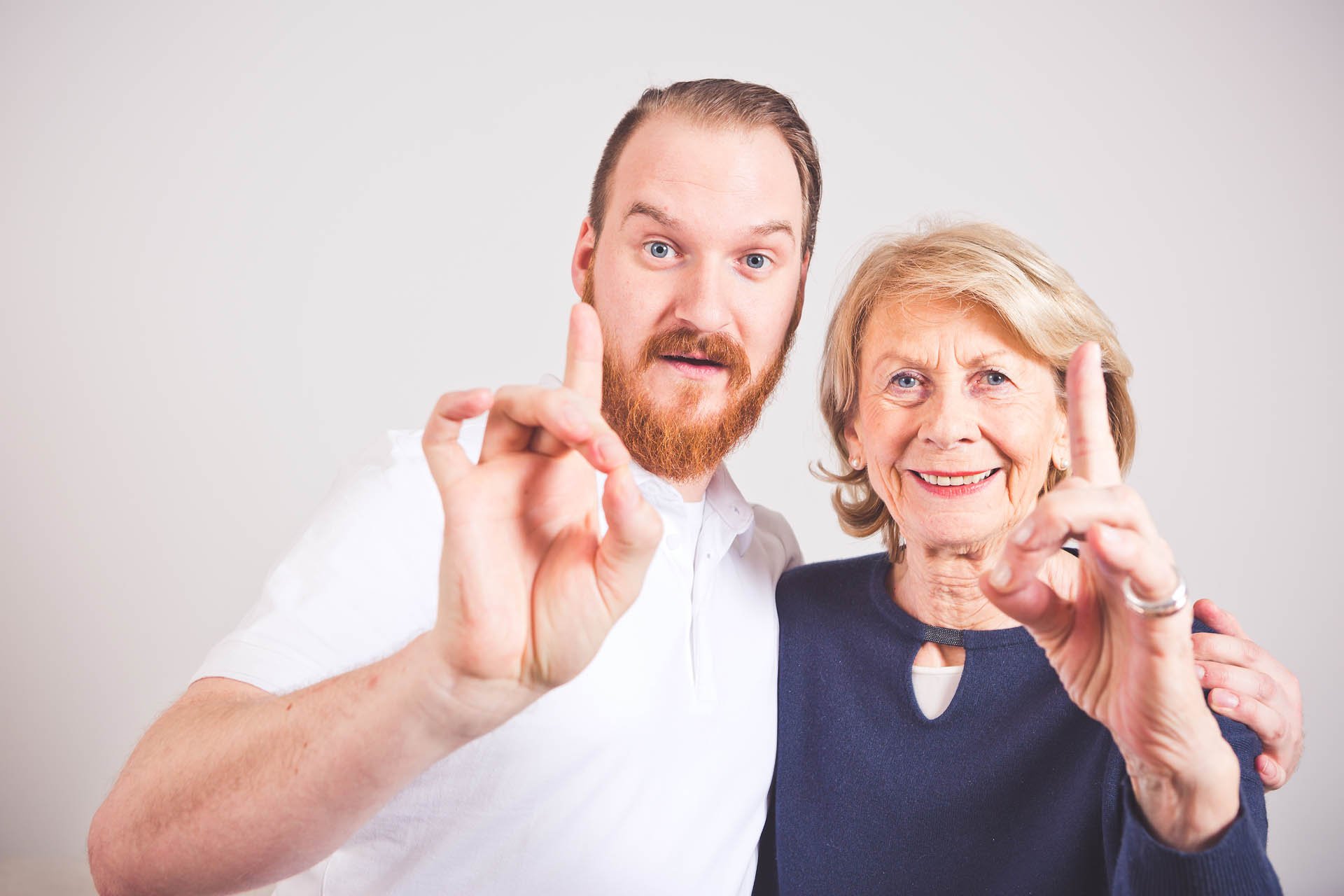
The Science Behind LINDERA: What Therapists in Senior Living Need to Know

Evidence-based gait analysis that saves time without compromising quality
Why This Matters to You
As a therapist working in senior living, you face an impossible equation: deliver comprehensive fall risk assessments in less time, with shrinking budgets, while maintaining the clinical rigor your residents deserve. You need tools that work in the real world—not just in research labs.
That's exactly what LINDERA was built for. And the science proves it works.
The Gold Standard Validation: Published in Nature
Bottom line first: LINDERA's gait analysis achieves a 0.982 ICC (Intraclass Correlation Coefficient) compared to GAITRite—the $40,000 gold standard system most facilities can't afford.
What Does 0.982 ICC Mean in Practice?
An ICC above 0.90 is considered "excellent agreement" in clinical research. At 0.982, LINDERA's smartphone-based analysis is essentially interchangeable with lab-grade motion capture systems.
Published validation: Azhand, A., Rabe, S., Müller, S., Sattler, I., & Steinert, A. (2021). Algorithm Based on One Monocular Video Delivers Highly Valid and Reliable Gait Parameters. Nature Scientific Reports, 11(1).
What they tested:
- Gait speed
- Step length (bilateral)
- Cadence
- Stride length
- Stance/swing phase timing
- Double support time
- Spatial parameters
The result: Across all parameters, LINDERA matched GAITRite's precision—from a 25-second smartphone video.
Why This Matters to Therapists
You don't need a dedicated gait lab. You don't need expensive equipment. You don't need 30 minutes per assessment.
You need 2-3 minutes and a smartphone. The clinical accuracy is identical.
Real-World Evidence: 27% Reduction in Falls
Lab validation is great. But does it work with your residents? In your facility? With your workflow?
The Residential Care Study
LINDERA tracked outcomes across multiple residential care facilities, comparing "high users" (facilities that consistently used LINDERA for assessment and intervention planning) versus "low users."
The results:
- 27% reduction in actual fall events among high-use facilities
- Reduced fall-related hospitalizations
- Measurable improvement in mobility scores over time
Citation: Alves, S., Temme, S., & Motamedi, S. (2025). Fewer Falls and Hospitalizations: Evaluating the Role of App-Based Fall Risk Analysis and Prevention in Elderly Care. Under Review.
What Makes the Difference?
It's not magic—it's systematic implementation:
- Baseline assessment identifies specific risk factors
- Personalized interventions target those exact factors
- Progress tracking shows what's working (or not)
- Early detection of decline triggers timely intervention
The facilities that used LINDERA consistently—making it part of their standard workflow—saw dramatic improvements. The facilities that used it sporadically saw no benefit.
Takeaway: The tool works, but only if you actually use it systematically.
The Cluster-RCT: LINDERA vs. Standard of Care
The gold standard of clinical research is the randomized controlled trial (RCT). LINDERA underwent a cluster-randomized controlled trial with BARMER, one of Germany's largest health insurance providers.
Study Design
- Intervention group: Residents received LINDERA assessments + multifactorial fall prevention interventions
- Control group: Residents received standard care
- Setting: Residential elder care during COVID-19 pandemic
- Measure: Change in fall risk score over time
The Surprising Results
During the pandemic (when mobility typically declines):
- Intervention group: -16% reduction in fall risk score (improvement)
- Control group: +14% increase in fall risk score (decline)
Net effect: 30-percentage-point difference between groups.
Citation: Alves, S., Kura, M., Zerth, J., Müller, S. (2024). Efficacy of mHealth Tools in a Multifactorial Approach to Fall Prevention Among Elderly Care Patients: A Cluster-Randomized Controlled Trial. EU Falls Fest 2024 conference poster. Manuscript in preparation for peer-reviewed journal.
Why This Matters
Even during a global pandemic—when residents were less active and at higher risk—LINDERA-guided interventions improved mobility and reduced fall risk.
Standard care? Fall risk went up 14%.
If it works during COVID, it works in your facility.
Prognostic Validity: Predicting Future Falls
It's one thing to assess current fall risk. It's another to accurately predict who will actually fall.
The JMIR Aging Study
LINDERA's Fall Risk Score (FRS) was tested for prognostic validity—does it accurately predict future fall events?
Study details:
- 617 older adults in German residential care facilities
- 857 observations (multiple assessments over time)
- Follow-up tracking of actual fall events
Results:
- The FRS demonstrated good prognostic validity for predicting future falls
- Risk stratification worked: High-risk patients fell more frequently than low-risk patients
- Early intervention was possible: Changes in FRS preceded fall events
Citation: Alves, S., Temme, S., Motamedi, S., Kura, M., Weber, S., Zeichen, J., Pommer, W., Baumgart, A. (2024). Evaluating the Prognostic and Clinical Validity of the Fall Risk Score Derived From an AI-Based mHealth App for Fall Prevention: Retrospective Real-World Data Analysis. JMIR Aging 2024;7:e55681.
What This Means for Your Practice
When LINDERA says someone is high-risk, they actually are high-risk. This isn't a subjective clinical impression—it's a validated, objective prediction.
Practical application:
- Prioritize therapy resources for high-risk residents
- Justify PT referrals with objective data
- Track progress with validated outcome measures
- Communicate risk clearly to families and administrators

The Technology: How It Works (Without the Jargon)
You're a therapist, not a computer scientist. Here's what you need to know:
Markerless 3D Motion Capture
Traditional gait analysis:
- Requires reflective markers placed on anatomical landmarks
- Requires multiple cameras and calibrated lab space
- Takes 30+ minutes to set up and conduct
- Costs $20,000-$40,000 for equipment
LINDERA:
- Uses your smartphone camera (any modern iPhone or Android)
- AI identifies 21 anatomical points automatically
- Creates 3D skeleton model from 2D video
- Takes 25 seconds to record, instant results
- Costs: price of an app subscription
The AI Behind the Scenes
LINDERA's AI was trained on thousands of gait videos, validated against gold-standard systems, and refined over 6 years of R&D. The algorithms analyze:
- Spatial parameters: Step length, stride length, step width
- Temporal parameters: Gait speed, cadence, swing/stance timing
- Symmetry: Left vs. right comparisons
- Stability: Double support time, base of support width
- Quality: Smoothness, consistency, compensatory patterns
All calculated to millimeter and millisecond precision.
Regulatory Status: Built for the US Market
Current Certification
- MDR Class IIa certified medical device in Europe (2023)
- Meets stringent European medical device regulations
- HIPAA compliant for US healthcare data
US Regulatory Pathway
- FDA clearance pathway: 510(k) submission in progress
- TUG-compliant: 100% aligned with Timed Up & Go test requirements
- STEADI-aligned: Satisfies CDC fall prevention guidelines
- Medicare-compatible: Satisfies CMS assessment requirements
What this means: LINDERA is already used clinically in Europe under strict medical device regulations. US FDA clearance is the next step, and the pathway is clear.
The Efficiency Equation: Time Saved = More Residents Helped
Let's do the math.
Traditional Fall Risk Assessment
Time required:
- Timed Up & Go: 5-8 minutes
- Berg Balance Scale: 15-20 minutes
- Manual gait observation and documentation: 5-10 minutes
- Total: 25-38 minutes per resident
Residents assessed per 8-hour day: ~10-12 (if that's all you did)
LINDERA Fall Risk Assessment
Time required:
- Video recording: 40 seconds (done by aide or nurse)
- Review AI analysis: 2-3 minutes (therapist)
- Select interventions: 30 seconds (one-click)
- Total: 2-3 minutes therapist time
Residents assessed per 8-hour day: Dozens—without sacrificing other care duties.
The ROI for Your Facility
- Time saved per assessment: 22-35 minutes
- Additional residents assessed per week: 20-30+
- Early interventions implemented: Higher detection and prevention rates
- Falls prevented: 27% reduction (proven)
- Cost savings: $5,000+ per fall prevented (injury costs, liability, family confidence)
The Bottom Line: Science That Serves Therapists
LINDERA isn't just another "innovation" that makes your job harder. It's built on rigorous science, validated in real-world settings, and designed to fit your workflow.
The Evidence Stack
- Lab validation: 0.982 ICC vs. GAITRite (Nature Scientific Reports)
- Real-world outcomes: 27% fall reduction in residential care
- RCT evidence: 30-point improvement vs. standard care (BARMER study)
- Prognostic validity: Accurately predicts future falls (JMIR Aging)
- Regulatory clearance: MDR Class IIa certified, FDA pathway underway
What You Get
- Clinical-grade accuracy without lab-grade equipment
- 2-3 minutes instead of 30 minutes per assessment
- Objective data to justify interventions and prove progress
- Systematic fall prevention that actually reduces falls by 27%
- Integration with your existing EMR/EHR systems
- Support from a team that understands senior living workflows
Ready to See the Science in Action?
The research is published. The outcomes are proven. The efficiency gains are real.
The question isn't whether LINDERA works—the evidence proves it does.
The question is: Are you ready to work smarter, not harder?
Next Steps
- Request a demo: See LINDERA in action with your own residents
- Try the pilot: 30-day trial in your facility, measure the difference
- Review the research: Full citations and studies available upon request
Contact: hello@lindera.de | www.lindera.ai
References & Further Reading
- Azhand, A., Rabe, S., Müller, S., Sattler, I., & Steinert, A. (2021). Algorithm Based on One Monocular Video Delivers Highly Valid and Reliable Gait Parameters. Nature Scientific Reports, 11(1).
- Alves, S., Temme, S., Motamedi, S., Kura, M., Weber, S., Zeichen, J., Pommer, W., Baumgart, A. (2024). Evaluating the Prognostic and Clinical Validity of the Fall Risk Score Derived From an AI-Based mHealth App for Fall Prevention. JMIR Aging 2024;7:e55681.
- Alves, S., Kura, M., Zerth, J., Müller, S. (2024). Efficacy of mHealth Tools in a Multifactorial Approach to Fall Prevention Among Elderly Care Patients: A Cluster-Randomized Controlled Trial. EU Falls Fest 2024 conference poster.
- Alves, S., Temme, S., & Motamedi, S. (2025). Fewer Falls and Hospitalizations: Evaluating the Role of App-Based Fall Risk Analysis and Prevention in Elderly Care. Under Review.
- Montero-Odasso M., van der Velde N., Martin FC., et al. (2022). World guidelines for falls prevention and management for older adults: a global initiative. Age Ageing, 51(9).
LINDERA is an MDR Class IIa certified medical device. FDA clearance pending. Results may vary. Always use clinical judgment in conjunction with assessment tools.


